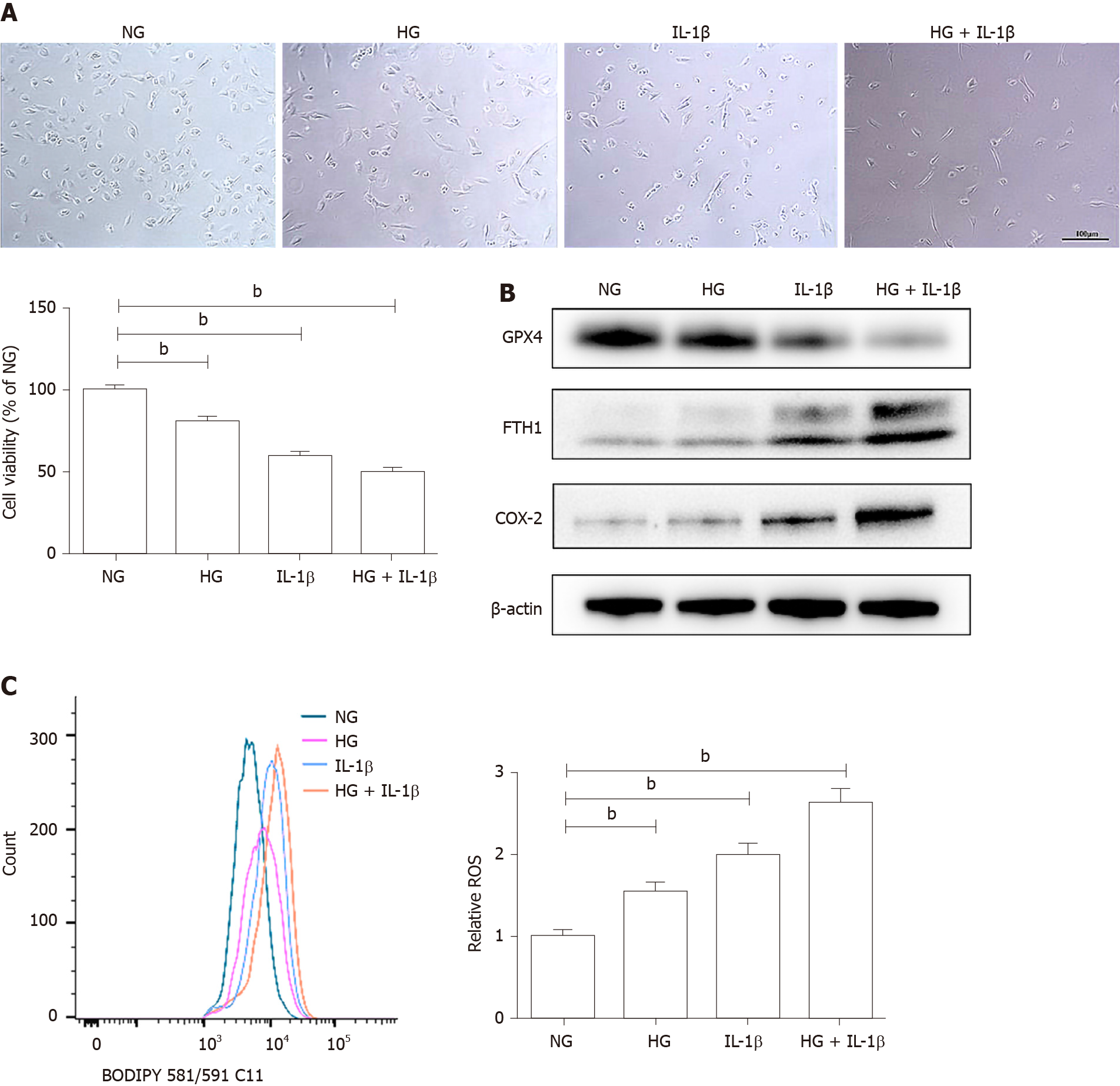Copyright
©The Author(s) 2021.
World J Diabetes. Feb 15, 2021; 12(2): 124-137
Published online Feb 15, 2021. doi: 10.4239/wjd.v12.i2.124
Published online Feb 15, 2021. doi: 10.4239/wjd.v12.i2.124
Figure 1 Effects of high glucose and interleukin-1β on ferroptosis in human umbilical vein endothelial cells.
A: Human umbilical vein endothelial cells were treated with normal glucose (5 mmol/L) or high glucose (30 mmol/L) and interleukin-1β (10 ng/mL). After treatment for 48 h, representative phase-contrast microscopy images of human umbilical vein endothelial cells were obtained and cell viability was determined using Cell Counting Kit-8. Scale bar: 100 μm; B: The protein levels of glutathione peroxidase 4, FTH1, and cyclooxygenase-2 were determined using Western blot assays. β-actin was used for normalization; C: The generation of reactive oxygen species was determined by the BODIPY™ 581/591 C11. To maintain constant isotonicity or osmolality, normal glucose (5 mmol/L) medium was supplemented with D-mannitol (25 mmol/L, final concentration) in the current study. aP < 0.05 vs the control group. bP < 0.01 vs the control group.
- Citation: Luo EF, Li HX, Qin YH, Qiao Y, Yan GL, Yao YY, Li LQ, Hou JT, Tang CC, Wang D. Role of ferroptosis in the process of diabetes-induced endothelial dysfunction. World J Diabetes 2021; 12(2): 124-137
- URL: https://www.wjgnet.com/1948-9358/full/v12/i2/124.htm
- DOI: https://dx.doi.org/10.4239/wjd.v12.i2.124









